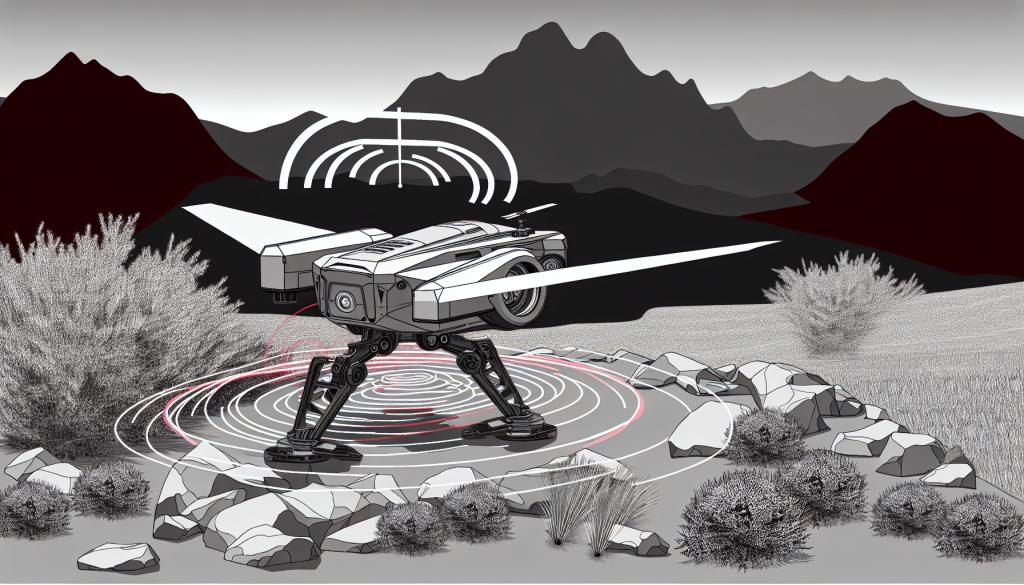The Partnership between AimLock and Overland AI: A New Era in Autonomous Targeting and Mobility
In an exciting development at AUSA 2025 in Washington D.C., AimLock and Overland AI unveiled a collaborative effort to blend cutting-edge autonomous targeting technology with advanced unmanned ground mobility. This groundbreaking partnership aims to tackle a pressing issue in modern military operations: delivering precise effects in GPS-denied environments, all while maintaining human oversight at the heart of the decision-making process.
The Significance of the Collaboration
The integration of AimLock’s autonomous targeting and engagement technology with Overland AI’s tactical unmanned ground vehicle (UGV) represents a key evolution in military capabilities. The partnership aims to enhance operational efficiency by providing a robust solution for challenging conditions that often hinder conventional military operations. As warfare evolves, this collaboration reflects a broader trend towards modular, scalable robotics that are designed to sustain operational tempo, safeguard personnel, and quickly adapt to changing threat landscapes.
The Defense Product at the Core
At the heart of this innovative announcement is Overland AI’s mission-ready UGV, which is purpose-designed for beyond-line-of-sight autonomy. This vehicle not only operates efficiently at the tactical edge but is also engineered for attritable use, meaning it can be deployed in scenarios where losing a vehicle is acceptable due to the mission’s urgency. Its rugged design features a high-clearance underbody, oversized all-terrain tires, and a stabilized weapon and sensor module that can adapt to various combat needs.
The open-architecture design of the UGV allows for rapid reconfiguration between mission profiles without requiring extensive redesigns. This plug-and-play philosophy enhances the flexibility and adaptability of military units operating in heterogeneous environments.
The Technical Synergy
AimLock enriches this system with its Keystone Core Targeting Module (CTM) alongside an array of effectors, such as Spur, Rampart, Summit, Switchback, and ROLS. This technology facilitates the detection, tracking, and engagement of threats while adhering to a human-in-the-loop workflow, thereby ensuring that operators maintain better control of the situation. In practical terms, the UGV provides essential mobility and power, while the CTM automates critical tasks like sensing and targeting, allowing human operators to retain the ultimate authority on engagement.
Development Through Iterative Testing
Both AimLock and Overland AI have conducted iterative testing with U.S. defense stakeholders to fine-tune the capabilities of the UGV. These trials have focused on developing the autonomous mobility and perception of the vehicle in representative military contexts, often simulating GPS denial and electronic warfare interference. Simultaneously, AimLock has made significant strides in refining its stabilized auto-tracking and engagement logic, validating crucial operational procedures.
This convergence of advanced mobility, situational awareness, and autonomous targeting under tight human supervision reduces cognitive load and speeds up engagement responses, which are vital in modern combat situations.
Tactical and Operational Advantages
The benefits of this partnership extend far and wide. From a tactical standpoint, military units can achieve enhanced stand-off lethality and improved operational survivability. By deploying autonomous vehicles in dangerous situations, soldiers can remain safely back while maintaining rapid threat engagement capabilities.
Operationally, the versatility of a single chassis allows for a wide range of missions—from counter-Unmanned Aerial Systems (UAS) operations to direct combat and support roles—through simple payload changes. This adaptability streamlines logistics and simplifies training while ensuring sustained operational readiness.
Technical Implications for Future Warfare
The strategic implications of this collaboration stretch beyond individual vehicles. Adaptable, attritable UGVs offer allied forces a means to enhance defensive capabilities at critical locations such as airfields and logistics hubs without committing large troop numbers. This aligns with modern military concepts of manned-unmanned teaming, which aim to distribute risk more effectively while complicating adversaries’ engagement strategies.
Moreover, maintaining a human-in-the-loop system ensures that ethical and legal concerns are adequately addressed as the role of autonomous systems continues to expand in military operations. This oversight preserves accountability even as the speed and complexity of warfare increase.
Pioneering the Path Forward in Military Robotics
The unveiling of this partnership at AUSA 2025 marks more than just a technological integration; it signals a significant advancement in the field of military robotics. The collaboration between AimLock and Overland AI is paving the way for future developments in unmanned ground systems, extending battlefield reach and improving decision-making timelines while ensuring that command authority remains firmly in human hands.
As ongoing trials and research move toward potential procurement, the integration of AimLock’s advanced targeting capabilities with Overland AI’s versatile UGV could redefine layered defense and mobile fire support strategies, significantly enhancing military capabilities in a rapidly evolving landscape.
About the Author
Teoman S. Nicanci is a defense analyst at Army Recognition Group. With a background in Political Science, Comparative and International Politics, and International Relations and Diplomacy from leading Belgian universities, he specializes in the global defense industry and emerging defense technologies. His insights into modern warfare and strategic behavior provide valuable perspectives on contemporary military challenges.

